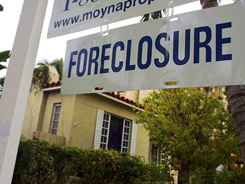Heritage Circle Condominiums
Help for Condo owners New to Association Living
It is often apparent, albeit after the fact, that new Condos owners had no idea what they were getting into when they purchased property in a common interest development. They receive violation notices from management about the lawn ornaments they’ve installed in the common area, or they begin a renovation project without going through the architectural approval process, or they are parking one of their many extra vehicles in guest parking. They are headed for a life of dissatisfaction (with the association) and disharmony (with their neighbors, board of directors and management). The good news is, this is a curable disease! Knowledge IS power - so ask the Experts!
Here are also some common sense steps to take, both by the association and by a potential buyer, to avoid ‘unhappy homeowner’ syndrome:
For Potential Buyers:
1. Read the Governing Documents! Well, duh, you might say, but you’d be surprised (or maybe not!) at how many Condos owners buy into a common interest development without ever having touched the Declaration of Covenants, Conditions & Restrictions. Yes, there are many pieces of paper to sign at a closing, so get around that by asking for the documents in advance of the closing (many states require that potential buyers be provided with all the governing documents before executing a Contract to Purchase). Pay particular attention to the Use Restrictions. Can you live with your neighbors telling you what colors you can paint your patio? If not, this might not be the place for you.
2. Look at the other Condos in our community. Okay, you probably did this when you were thinking about whether to live here, but this time, look at them with an eye toward how well they are maintained, where the cars are parked, whether the common areas are well kept. This will give you an idea of the community standards you’ll be asked to live up to (hopefully not ‘down’ to!) How well does that sit with you? Does it match your own standards?
3. Review the association’s financial statements. This is very important. This will give you a good idea what the community pays for and what services to expect. Moreover, you could be buying into a community that has not been collecting enough assessments for reserves, or that has experienced difficulty collecting assessments (what with foreclosures, unemployment, etc., being more prevalent nowadays), and you need to know this. Once you’re a member of a common interest development, you become inextricably intertwined with your fellow homeowners’ financial well-being. There is strength in numbers, but you need to be aware of what the numbers look like.
4. Read the minutes. The association’s meeting minutes will give you a good idea about how the board of directors and management are running things. Are they too strict, or not strict enough? In other words, does their management philosophy fit in with your ideas about community living?
5. Find out about the your Condo-management's reputation. Do the manager and the maintenance staff have a good reputation with the neighbors? Poorly managed communities can be, well, a nightmare to live in.
============================================================================================
For association boards and managers:
1. Prepare a Welcome Packet. A well-thought-out Welcome Packet can answer a lot of questions ahead of time – how does parking work, when/where do I pay assessments, how do I get a key to the pool. This will provide great information for new owners and residents, and save you headaches down the road. This is also a good time to ask for emergency contact information in a form they’d return.
2. Send a ‘Welcome to the Community’ letter (which could be included in the Welcome Packet or sent separately). When a new owner or resident moves in, the manager or management company should send a letter of introduction, explaining the manager’s role, how to get in touch, what to do in emergencies, etc. Perhaps include copies of recent newsletters, and a business card or refrigerator sticker.
3. Review your Disclosure Package. Make sure you’ve included all of the pertinent governing documents, etc. If there is something special about your community, consider making a separate flyer or notice that will stand out from the package and keep the new owner or resident from making a misstep. Like ‘No Overnight Parking in the Guest Areas’ to avoid unpleasant towing situations – that sort of thing.
4. Create a Welcome Committee. If you can get some friendly volunteers to meet new homeowners and residents to orient them to the community and invite them to participate in community events or attend meetings, this will serve you well. It will be a great recruiting tool for future volunteers for one thing, and it’s always nice to be able to ask questions face-to-face when you’re new.
5. Introduce new members in community communications. There’s nothing like seeing your name in print. Have your Welcome Committee provide information about new homeowners for the next community newsletter, of course with their permission (wouldn’t want to ruin anyone’s ‘witness protection program’!) We’ve also introduced them at annual meetings, which is a big hit.
With some forethought on everyone’s part, you can avoid the ‘what have I done!’ syndrome and enjoy home ownership in a common interest development. Happy homeowners, happy board members, and happy management – yes, it’s possible if YOU participate!
=================================================================================================
Avoiding Foreclosure Rescue Scams

Behind every new foreclosure is a desperate family willing to do anything to save their home. And as foreclosures continue to mount across the U.S., so do the number of con artists trying to take advantage of these same families with claims that they can rescue their homes from foreclosure.
These fraudulent foreclosure rescue companies offer vague promises, but will actually lie and cheat to get your business. They sell services, promise relief and always fail to deliver. Some end up stealing the homes from their clients, others collect large fees for services never provided and then disappear.
The business of these scammers is to make a fast profit through fees or mortgage payments that they collect, but do not pass on to the lender. What these scams do is take your money, ruin your credit record, and wipe out any equity you have in your home.
Don't Be A Victim
Potential victims are easy to find: mortgage lenders publish notices before foreclosing on homes. After reading such notices, con artists approach their targets in person, by mail, over the telephone, or by e-mail. They advertise their services on Web sites or publications. They often refer to themselves with titles that sound official, such as "foreclosure consultant" or "mortgage consultant," and market themselves as a "foreclosure service" or "foreclosure rescue agency."
As is the case with any scam, avoidance is the best medicine. This is particularly true with foreclosure scams as undoing the damage done will involve money for attorney fees, time, and intervention by state regulators. Even if the con artists were prosecuted, it would probably not be enough to save the home that was being foreclosed on in the first place. Just remember, if something sounds too good to be true, it probably is.
Your mortgage lender - or any legitimate financial counselor - can help you find real options to avoid foreclosure. If someone offers to negotiate with your lender and offers to arrange to stop or delay foreclosure for a fee, carefully check his or her credentials, reputation, and experience. For your protection we offer the following recommendations.
Foreclosure rescue scams usually fall into one of the following four categories:
Phony Counseling or Phantom Help
The scam artist tells you that he can negotiate a deal with your lender to save your house if you pay a fee first. You may be told not to contact your lender, lawyer, or credit counselor, and to let the scam artist handle all the details. Once you pay the fee, the scam artist takes off with your money.
Sometimes, the scam artist insists that you make all mortgage payments directly to him while he negotiates with the lender. In this instance, the scammer may collect a few months of payments before disappearing.
Bait-and-Switch
You think you're signing documents for a new loan to make your existing mortgage current. This is a trick: you've signed documents that surrender the title of your house to the scam artist in exchange for a "rescue" loan.
Rent-to-Buy Scheme
You're told to surrender the title as part of a deal that allows you to remain in your home as a renter, and to buy it back during the next few years. You may be told that surrendering the title will permit a borrower with a better credit rating to secure new financing - and prevent the loss of the home. But the terms of these deals usually are so burdensome that buying back your home becomes impossible. You lose the home, and the scam artist walks off with all or most of your home's equity. Worse yet, when the new borrower defaults on the loan, you're evicted.
In a variation, the scam artist raises the rent over time to the point that the former homeowner can't afford it. After missing several rent payments, the renter - the former homeowner - is evicted, leaving the "rescuer" free to sell the house.
In a similar equity-skimming situation, the scam artist offers to find a buyer for your home, but only if you sign over the deed and move out. The scam artist promises to pay you a portion of the profit when the home sells. Once you transfer the deed, the scam artist simply rents out the home and pockets the proceeds while your lender proceeds with the foreclosure. In the end, you lose your home - and you're still responsible for the unpaid mortgage. That's because transferring the deed does nothing to transfer your mortgage obligation.
Bankruptcy Foreclosure
The scam artist may promise to negotiate with your lender or to get refinancing on your behalf if you pay a fee up front. Instead of contacting your lender or refinancing your loan, though, the scam artist pockets the fee and files a bankruptcy case in your name - sometimes without your knowledge.
A bankruptcy filing often stops a home foreclosure, but only temporarily. What's more, the bankruptcy process is complicated, expensive, and unforgiving. For example, if you fail to attend the first meeting with the creditors, the bankruptcy judge will dismiss the case and the foreclosure proceedings will continue.
If this happens, you could lose the money you paid to the scam artist as well as your home. Worse yet, a bankruptcy stays on your credit report for 10 years, and can make it difficult to obtain credit, buy a home, get life insurance, or sometimes get a job.
Here are a Few Simple Rules to protect Yourself from Scams
- Know what you are signing. Read and understand every document you sign. If a document is too complex, seek advice from a lawyer or an approved, trusted financial counselor. Never sign documents with blank spaces that can be filled in later. Never sign a document that contains errors or false statements, even if someone promises to correct them later.
- Get promises in writing. Oral promises and agreements relating to your home are usually not legally binding. Protect your rights with a written document or contract signed by the person making the promise. Keep copies of all contracts you sign.
- Make your mortgage payments directly to your lender or the mortgage servicer. Do not trust anyone else to make mortgage payments for you.
- Be very careful about signing over your deed. Foreclosure scams often require you to sign over ownership of your home to a con artist or another third party. Never sign over your deed without getting the advice of your own lawyer, financial advisor, or other independent person that you know you can trust. Understand the terms of the deal you are making. By signing over your deed, you lose your rights to your home and any equity built up in the home.
Report suspicious activity to the Federal Trade Commission and to your state and local consumer protection agencies. Reporting con artists and suspicious schemes helps prevent others from becoming victims. The FTC works for the consumer to prevent fraudulent, deceptive, and unfair business practices in the marketplace and to provide information to help consumers spot, stop, and avoid them. To file an online complaint with the FTC go to: www.ftccomplaintassistant.gov/ or call toll-free, 1-877-FTC-HELP (1-877-382-4357); TTY: 1-866-653-4261. The FTC enters consumer complaints into the Consumer Sentinel Network, a secure online database and investigative tool used by hundreds of civil and criminal law enforcement agencies in the U.S. and abroad.
Also, please share your concerns and questions here, on our Discussion Section.
William
Last updated on 04/06/2011


